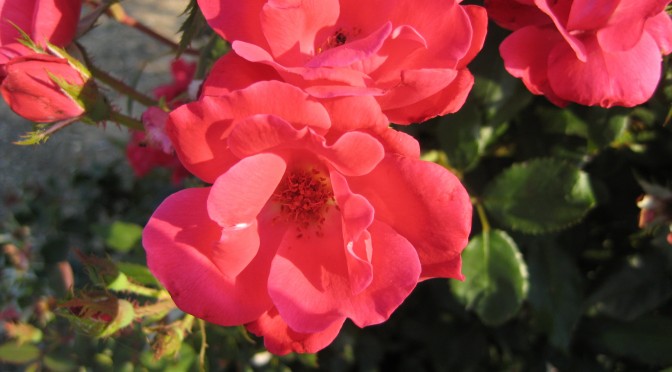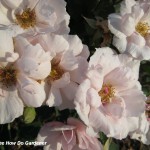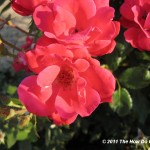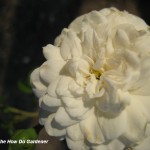Rose Rustling
You’ve probably never heard those two words used together before. They conjure up images of an outlaw in a black cowboy hat. Having decided that cattle were just a little too large and smelly to steal, he instead grabs his six-shooter and a pair of pruners, pulls his bandana up over his face, and heads off to rustle some roses from the neighboring ranches instead.
Quite to the contrary, a “rose rustler” is really the good guy in the white cowboy hat, riding in at the last minute to rescue long forgotten rose varieties. Scattered all across the country in old cemeteries, on abandoned homesteads, around old barns, along fences and back country roads are roses that have survived for decades. These “found” roses are hardy survivors and prized for their beauty and history.
Unlike our villain in the black hat, rose rustlers have strict rules of etiquette. When an old/new rose is spotted, care is taken to identify ownership, ask permission to visit the site, and ask permission to take a cutting for propagation. Information is usually gathered from the owner on how long it has been there, who planted it, and the plant’s blooming cycle.
A newly found rose is given a study name that usually relates to where it was found or the original owner. They are often identified as a known rose variety, but many go unidentified and thus permanently take on their study name. “Georgetown Tea”, “Highway 290 Pink Buttons”, and “Caldwell Pink” are just a few examples.
Antique Roses
Along with these “found” roses, many other “Old Garden” “Heritage” or “Antique” roses, many introduced into the U.S. before 1867, are being rediscovered. They are prized for their beauty, ease of growth, heat and drought tolerance, and adaptability to a wide variety of soils.
Research Proven
Horticultural experts at Texas A&M University have conducted an extensive eight-year field research study on these roses. During the study period, no pesticides were applied in order to evaluate their resistance to disease and pests.
Full Sun
All roses require “Full Sun” to thrive. Check out our handy Sun or Shade Tool. Here you will find definitions, and graphical representations to help determine what areas of your yard are in Full Sun, Partial Sun, Partial Shade, Full Shade, or Dense Shade.
Air Circulation
When planting roses, it is important to place them in a location that has good air circulation and to plant them at their recommended spacing (ex. 4’ apart). Good air circulation around your roses will help to prevent fungal diseases.
Soil
Although these roses will grow in almost any soil, ranging from well-drained acid sands to poorly aerated, highly alkaline clays, they will really thrive in well-drained soil that has been amended with plenty of organic matter or compost.
Deadhead
No, we’re not back in our cowboy analogy. Deadheading roses is the act of cutting off the spent rose flower blossom once it has finished blooming and lost all of its petals. Deadheading helps encourage the rose plant to produce new flowers.
Know Your Zone
Each rose variety will grow in a certain range of “Plant Hardiness Zones” (ex. Zones 4-9). Be sure to check which zones each rose will grow in. Use our Plant Hardiness Zones Tool to learn about Plant Hardiness Zones and to find which zone you live in.
Summary
The table below shows several varieties of roses along with their characteristics. With the large variety in sizes, shapes, growth habits, colors, and fragrances these roses offer, you are sure to find at least one to fit your landscape. Use them in mass plantings, as specimens, in containers, to cover an arbor, to hide the doghouse, or as an extremely effective barrier to “varmints” of all sizes.
Plant some and enjoy them today. And maybe, just maybe, a long, long time from now, a rose rustler will discover them still growing right where you planted them.








